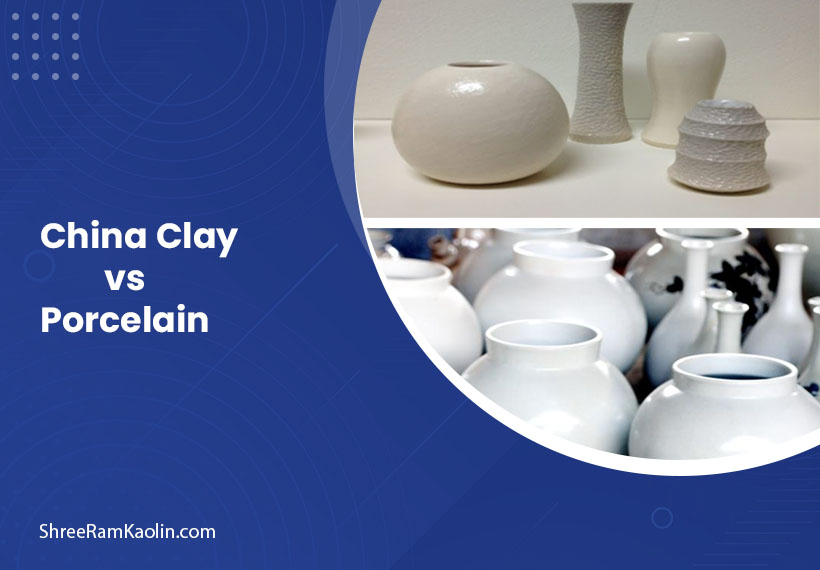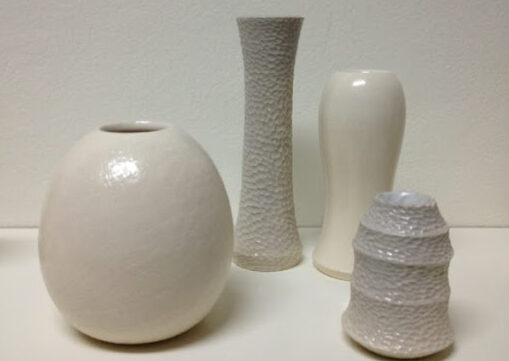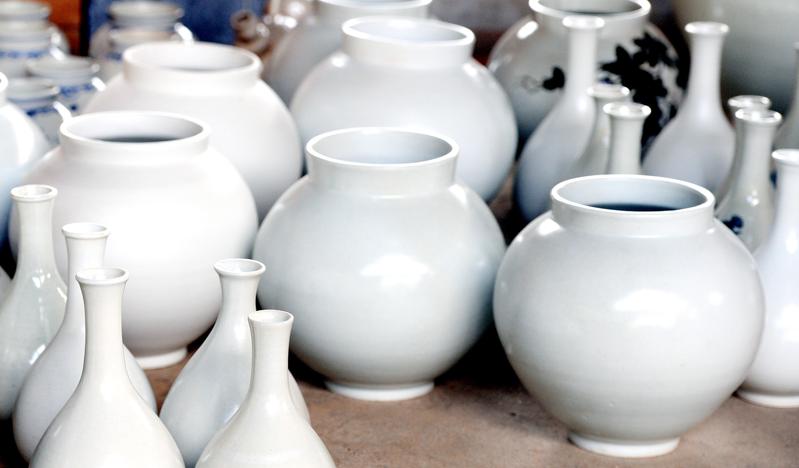China Clay vs. Porcelain

Ceramics is an expansive field that encompasses numerous materials and techniques. China clay and porcelain stand out for their distinctive properties and historical importance; in this article, we take an in-depth look into both materials, their histories, compositions, and various uses throughout time.
Introduction to China Clay and Porcelain
China Clay: A Versatile Material
China clay (kaolin) is an essential element in making porcelain; other applications for it include papermaking, paint production, and cosmetic use. China clay forms by weathering rocks in water environments and has a fine, particulate structure which gives its characteristic fine-grained surface finish.
Porcelain: The Art of Elegance
Porcelain is an exceptional ceramic material known for its strength, translucence, and thermal shock resistance. To produce porcelain it requires heating materials including china clay in a kiln to between 1,200-1.400 degrees Celsius before cooling to hard white translucent material which often exhibits characteristics of hardness.
Historical Background
The Origins of China Clay
China clay’s long history can be found back to ancient China where it was first used as a material to craft ceramics. Gradually its use spread to Asia and eventually Europe for making porcelain-esque ornaments as imitations of Chinese porcelain was so highly prized there.
Porcelain’s Journey from East to West
Porcelain first emerged during China’s Tang dynasty (618-907 AD), becoming an export product and cultural export. Europeans eventually learned its secrets of production – giving rise to notable porcelain manufacturers like Meissen and Royal Worcester.
Comparative Analysis of China Clay and Porcelain
Composition and Properties
China Clay: Composition and Characteristics
China clay is comprised primarily of the mineral kaolinite with various amounts of other minerals like feldspar and quartz also present. Due to the abundance of kaolinite present, china clay boasts fine textures with high degrees of whiteness that make it perfect for use in ceramic products.
Porcelain: A Complex Blend
Porcelain is comprised of china clay, feldspar, and quartz in various combinations; its precise composition depends on the type of porcelain being manufactured. High firing temperatures cause these components to vitrify into hard, glass-like material which creates hard surface material suitable for carving on.
Manufacturing Process
China Clay: From Extraction to Refinement
China Clay processing requires several steps. After being extracted using open pit mining methods, the extracted clay needs to be purified and refined to remove impurities, producing fine white powder suitable for various applications.
Porcelain: Crafting Elegance
Manufacturing porcelain requires extensive skill. Raw materials must first be mixed and formed into shapes before firing them in a kiln at high temperatures until their clay vitrifies into hard translucent porcelain material.
Aesthetic Differences
China Clay: Subtle and Versatile

China clay exudes subdued beauty. With its fine texture and white hue, China clay makes for the ideal base material in various finishes from matte to glossy finishes. Furthermore, China clay pigment is prized as part of papermaking or paint manufacturing processes where its pure white hue makes its use desirable.
Porcelain: Refined and Elegant

Porcelain is known for its smooth, glossy surface that comes either pure white or decorated with intricate designs. When thin enough it takes on an elegant appearance that makes it the preferred material for tableware and decorative objects alike.
Durability and Usage
China Clay: A Durable Base
China clay may not be as hard and durable as porcelain, yet still possesses excellent durability characteristics such as chemical resistance and low electrical conductivity, making it suitable for numerous industrial uses such as electrical insulators or refractories.
Porcelain: Strength and Elegance Combined
Porcelain is known for being extremely durable. It resists scratching, staining, and thermal shock resistance – qualities that make it perfect for use in tableware, tiles, and dental prosthetics.
Applications in Various Industries
China Clay: Beyond Ceramics
China clay has many applications within the industry. Papermaking uses it to improve paper brightness and smoothness; painting uses it as an extender/pigment; rubber, plastics, and cosmetic industries also utilize China clay products extensively.
Porcelain: From Art to Utility
Porcelain can be found everywhere from fine art sculptures and figurines, homeware plates and cups, electrical insulators, dental prostheses, industrial use insulators as well and electrical connectors – its beauty and versatility make porcelain suitable for artistic as well as practical uses.
Cost and Affordability
China Clay: Economical and Accessible
China clay is an easily accessible material due to its cost-effectiveness, making it suitable for various industrial uses. This cost-effectiveness helps justify its wide usage across numerous fields.
Porcelain: A Range of Prices
Price points can vary significantly for porcelain items; everyday dishes tend to be quite cost-effective while more delicate porcelain can become quite pricey with hand painting or having an established brand name.
Environmental Impact
China Clay: Environmental Considerations
The Mining of china clay may cause environmental effects, including habitat destruction and water pollution, yet efforts are being taken to lessen them with sustainable mining practices and land reclamation initiatives.
Porcelain: Energy Intensive
Producing porcelain requires considerable energy due to the high temperatures necessary for firing, leading to emissions from energy use and greenhouse gas emissions. However, due to porcelain’s durability products created using it have an extended lifecycle which helps mitigate some of these negative environmental impacts.
Maintenance and Care
China Clay: Handling and Cleaning
China clay should be handled with care to prevent inhalation of fine particles. When cleaning surfaces contaminated with china clay, use water and mild detergent to avoid abrasion. Wearing protective equipment such as gloves and masks is recommended during handling and cleaning processes.
Porcelain: Durability and Care
Porcelain is more durable and generally easier to care for than china clay, typically being dishwasher-safe and stain-proof. Antique or hand-painted pieces should be handled carefully due to any delicate paint layers requiring special consideration.
Making an Informed Choice
Selecting the Right Material for Your Needs
Before choosing between china clay and porcelain, take into account your intended use, aesthetic preferences, and budget. China clay may be more cost-effective in industrial settings while porcelain offers greater beauty and durability which make it suitable for tableware decorative objects and applications where a more refined aesthetic is preferred.
FAQs about China Clay and Porcelain
Can china clay and porcelain be interchangeably used?
However, they differ sufficiently that interchangeability is unlikely.
Is porcelain more costly than china clay?
Porcelain tends to be more costly due to its greater translucency and strength.
Are there any health considerations associated with using china clay and porcelain tableware?
Glazing and firing both materials appropriately are considered safe for food consumption.
Can china clay and porcelain be recycled?
Yes, both materials can be recycled successfully; the process just may vary based on their compositions.
Which material is more eco-friendly: china clay or porcelain?
As it depends on various variables like extraction methods, manufacturing processes and recycling initiatives – both materials offer great potential to create sustainable improvements in society.
Conclusion
China clay and porcelain are two fascinating materials with a long and fascinating history that have various applications across various fields of study and industry. Ranging from subtle beauty to refined elegance, both materials have played a critical role in ceramic development – both artfully and industrially – so knowing their properties and uses will assist with informed choices for both practical and artistic needs.Top of Form

